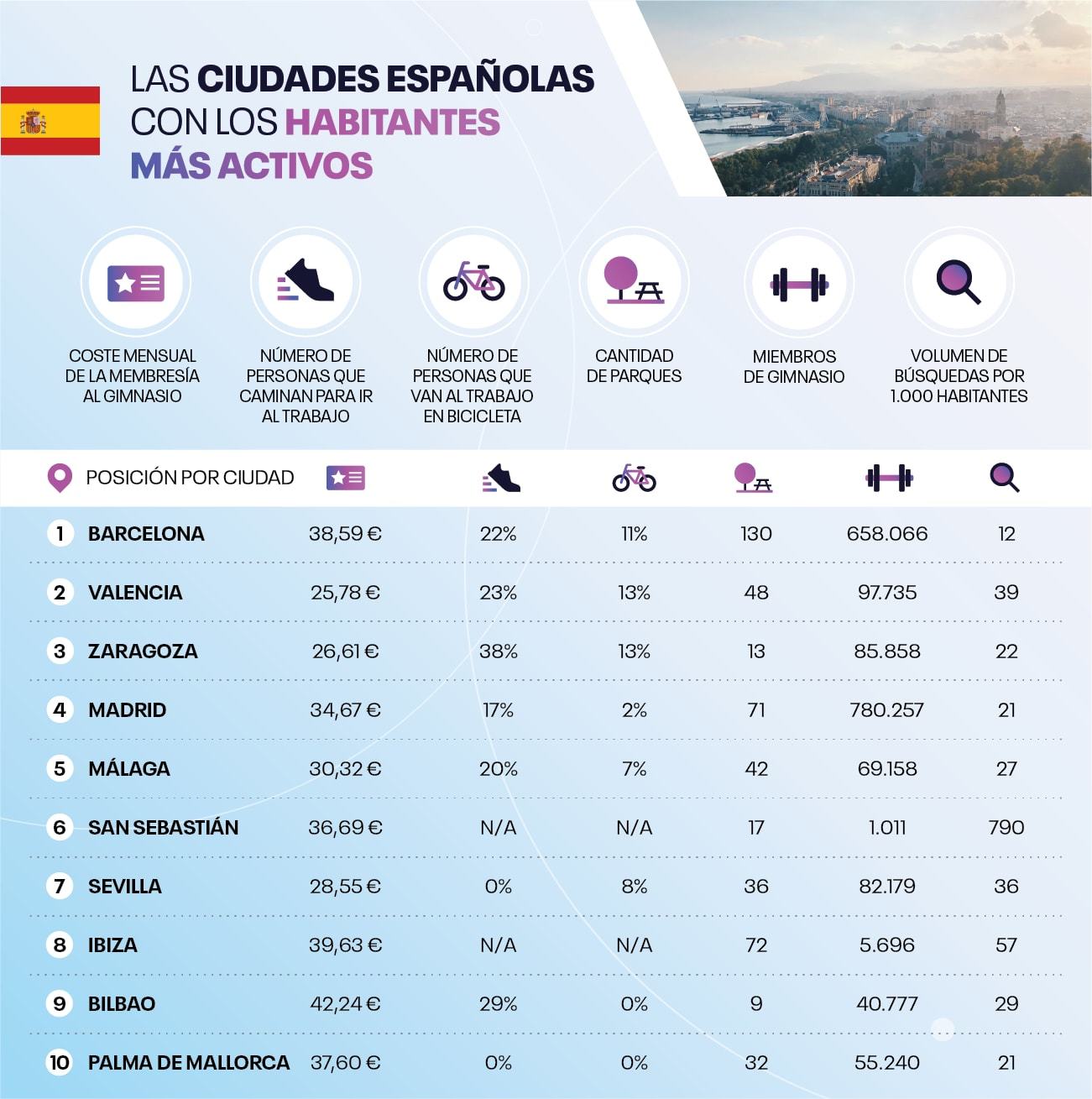Among the great lessons that we should have learned after the emergence of the coronavirus in our lives is the extraordinary value of physical activity as a guarantor of our health.
The main
ally of our immune system
, together with a balanced diet and adequate rest, the regular practice of exercise has become one of the key pieces in the fight against Covid.
What's more, according to research published in the British Journal of Sports Medicine in April this year, a lack of physical activity could double the risk of dying from coronavirus.
However, despite continuous calls from the World Health Organization (WHO) to combat sedentary lifestyle with that
minimum of 150 minutes of weekly physical activity,
more than a quarter of the world's adult population continues to turn a deaf ear to their recommendations, especially in urban surroundings.
Based on this worrying scenario, Reebok has just revealed the conclusions of a study in which the lifestyle in more than
60 cities around the world
is analyzed
to reveal which are the most active, taking into account variables such as the percentage of people registered in the gym or use of bicycles and other values related to the environment.
Some results that, to be honest, do not throw up too many surprises because they place
Amsterdam at the head of the 20 cities that are most strongly committed to the physical well-being
of its citizens.
A classification in which, by the way, there are three Spanish cities: Valencia (in fifth position), Madrid (10) and Barcelona (12).
DAILY ACTIVITIES
Neither running, nor yoga, nor zumba.
The key to the leadership of the capital of the Netherlands lies in an aspect on which the WHO is increasingly emphasizing: the importance of moving as much as possible in our day-to-day lives, making the most of every opportunity that our daily lives offer us. to keep us active.
It is no coincidence, therefore, that
Amsterdam
, crowned as the city that most vigorously promotes physical well-being, is the place where the
most people cycle to work:
almost 46% of the population.
A detail that, together with the Dutch fondness for the gym, makes the obesity rate around 20%.
In this section,
Zurich and Geneva
, both in Switzerland, share the
lowest obesity rates
among the 20 main cities (19.5%).
On the contrary, at the other end of the scale are the Canadian cities of Montreal and Toronto, with a percentage of 29.4%, despite the fact that the former stands out for being the one that offers the most facilities to go to the gym, with a average fee of € 23.26 per month.
SPANISH CITIES
The people of Barcelona are, as indicated in this study, the most active citizens in Spain, if the percentage of inhabitants who travel by foot or by bicycle and those who go to the gym are taken into account.
Of course, Zaragozans take the cake when it comes to using their legs as a means of transportation to go to work: 38% walk and 13% by bicycle.
In Madrid, only 2.29% of its inhabitants use the bicycle to go to work, but they are the most likely to go to the gym (780,257 Madrilenians are members of one) while 17% choose to go on foot.
The highest average gym rate is that of Bilbao (42.24 euros per month) and the lowest that of Valencia: 25.78.
According to the criteria of The Trust Project
Know more
Coronavirus
Madrid
Spain
Switzerland
Barcelona
Catalonia
Valencia
Covid 19
Diary 'covid' of a pregnant woman My vaccine on the eve of childbirth: "We are a hormonal bomb"
Housing Paying the entrance of a house: a territorial gap of 11 years depending on the city in which you live
HealthA court in Barcelona authorizes the administration of ozone therapy to a serious patient due to covid
See links of interest
Last News
2021 business calendar
Home THE WORLD TODAY
Master investigation
Stage 16, live: Laredo - Santa Cruz de Bezana

